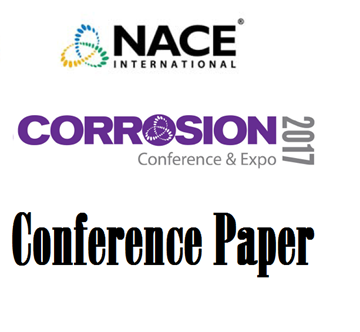Search
Individual Conference Papers
View as
Sort by
Display
per page
Inhibition of Calcium Phosphate Scale on Heat Exchangers-Relation Between Laboratory Test Results and Tests on Heat Transfer Surfaces
Product Number:
79220
Publication Date:
1979
$20.00
Inhibition of Crevice Corrosion of Ni-Cr-Mo Alloys by Sulfate, Nitrate and Molybdate
Product Number:
51323-18936-SG
Publication Date:
2023
$20.00
Inhibition of Formation of Magnesium Hydroxide by Polymers: The Role of Molecular Architecture
Product Number:
51321-16710-SG
Publication Date:
2021
$20.00
Inhibition of Microbial Induced Corrosion of Concrete using Admixture and Surface Applied Corrosion Inhibitors
Product Number:
51323-18768-SG
Publication Date:
2023
$20.00
Inhibitor Exhaustion From Aerospace Primers
Product Number:
51322-18158-SG
Publication Date:
2022
$20.00
Inhibitory Activity of Biopolymers Synthetic Polymers and Phosphonates Against the Formation of Calcium Phosphate Scale in Cooling Water Systems
Product Number:
51317--9013-SG
ISBN:
9013 2017 CP
Publication Date:
2017
$20.00
Initiation Sites of Pitting Corrosion in the Nickel Alloy UNS N07718
Product Number:
51323-18846-SG
Publication Date:
2023
$20.00
Inline Cathodic Protection Current Mapping - Applications
Product Number:
51322-17629-SG
Publication Date:
2022
$20.00
Innovations in Dehumidification and Climate Control For Tank Coating Projects
Product Number:
41208-417-SG
Publication Date:
2008
$20.00
Innovative And Sustainable Corrosion Protection Solutions For Foundation Structures Of Offshore Wind Turbines
Product Number:
51322-17526-SG
Publication Date:
2022
$20.00
Innovative Biocide Blend Solves Microbial Contamination Issues In Hydraulic Fracturing Applications
Product Number:
51322-18154-SG
Publication Date:
2022
$20.00
Innovative Colorants for Coatings Industry (Easy Dispersing and Low VOC Colorants)
Product Number:
41210-547-SG
Publication Date:
2010
$20.00












